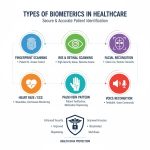Agricultural Chelates Market: Transforming Modern Agriculture Through Enhanced Nutrient Delivery
Overview of Agricultural Chelates Market
The Agricultural Chelates Market represents a specialized segment within the broader agricultural inputs industry, focusing on chelated micronutrients that enhance plant nutrition and crop productivity. Agricultural chelates are complex compounds formed when metal ions bind with organic molecules called chelating agents, creating stable structures that improve nutrient availability and uptake in plants. According to recent market analysis by Vantage Market Research, this market is valued at USD 1,029.5 million in 2024 and is projected to reach USD 1,545.0 million by 2035, demonstrating a robust compound annual growth rate of 7.20% between 2025 and 2035. The market’s growth is primarily driven by increasing global food demand, rising awareness about soil health, declining arable land availability, and the growing adoption of precision agriculture practices that emphasize optimal nutrient management for sustainable crop production.
Get a Sample Copy:- https://www.vantagemarketresearch.com/agricultural-chelates-market-1073/request-sample
Market Dynamics
The Agricultural Chelates Market operates within a complex ecosystem influenced by multiple interconnected factors that shape its growth trajectory and competitive landscape. The primary driving force behind market expansion is the escalating global food security concerns, as the world population continues to grow while arable land diminishes due to urbanization and climate change impacts. This scenario has intensified the pressure on farmers to maximize crop yields from existing agricultural land, making efficient nutrient management through chelated fertilizers increasingly crucial. Additionally, the widespread prevalence of micronutrient deficiencies in soils worldwide has created substantial demand for agricultural chelates, particularly in regions where intensive farming practices have depleted natural soil nutrients over time.
The market dynamics are further influenced by evolving agricultural practices and technological advancements in fertilizer formulations. Modern farmers are increasingly adopting precision agriculture techniques that require sophisticated nutrient delivery systems capable of providing targeted nutrition based on specific crop requirements and soil conditions. This shift toward data-driven farming has elevated the importance of chelated micronutrients, which offer superior bioavailability and reduced environmental impact compared to traditional inorganic fertilizers. Government initiatives promoting sustainable agriculture and environmental stewardship have also contributed to market growth by encouraging the adoption of more efficient and environmentally friendly agricultural inputs.
Top Trends
Several transformative trends are reshaping the Agricultural Chelates Market landscape, reflecting the industry’s evolution toward more sustainable and efficient farming practices. The most prominent trend is the increasing integration of chelated micronutrients with smart agriculture technologies, including soil sensors, drone applications, and precision fertilizer applicators that enable real-time nutrient monitoring and targeted delivery. This technological convergence is revolutionizing how farmers approach crop nutrition, allowing for more precise application rates and timing that optimize both crop performance and input costs.
Another significant trend is the growing emphasis on organic and bio-based chelating agents as alternatives to synthetic EDTA-based products. Environmental concerns regarding the persistence and potential ecological impact of synthetic chelators have driven research and development efforts toward biodegradable alternatives such as amino acid-based chelates and natural organic compounds. This shift aligns with the broader sustainability movement in agriculture and addresses regulatory pressures in regions where environmental regulations are becoming increasingly stringent. Furthermore, the market is witnessing increased demand for customized chelate formulations tailored to specific crops, soil types, and regional growing conditions, reflecting the industry’s move toward more personalized agricultural solutions that maximize efficiency while minimizing environmental impact.
Top Report Findings
- The global Agricultural Chelates Market demonstrates strong growth potential with a projected CAGR of 7.20% from 2025 to 2035, indicating robust demand for enhanced nutrient delivery solutions
- Iron chelates dominate the market share due to widespread iron deficiency in agricultural soils and the critical role of iron in plant photosynthesis and chlorophyll synthesis
- Foliar application methods are gaining significant traction over soil application due to improved nutrient uptake efficiency and reduced environmental losses
- Cereals and grains represent the largest application segment, driven by the global importance of staple food crops and the need for enhanced yields to meet growing food demand
- Asia-Pacific emerges as the fastest-growing regional market, supported by intensive agriculture practices, large farming populations, and increasing adoption of modern agricultural technologies
- EDTA-based chelates maintain market leadership despite growing preference for biodegradable alternatives, primarily due to their proven effectiveness and cost advantages
- The market shows increasing consolidation as major players pursue strategic acquisitions and partnerships to expand their product portfolios and geographic reach
- Rising input costs and price volatility of raw materials pose ongoing challenges for market participants, driving innovation in more cost-effective formulation technologies
Challenges
The Agricultural Chelates Market faces several significant challenges that could potentially impact its growth trajectory and market penetration. The foremost challenge is the high cost of chelated micronutrients compared to conventional inorganic fertilizers, which creates affordability barriers for small-scale farmers, particularly in developing regions where price sensitivity is extremely high. This cost differential is exacerbated by the complex manufacturing processes required to produce high-quality chelated products and the premium pricing of chelating agents. Additionally, limited awareness and technical knowledge among farmers regarding the proper application methods, timing, and benefits of chelated micronutrients present substantial market barriers, especially in regions where traditional farming practices dominate and extension services are inadequate.
Environmental and regulatory challenges also pose significant obstacles to market growth. Concerns about the environmental persistence of synthetic chelating agents, particularly EDTA, have led to increased regulatory scrutiny and potential restrictions in environmentally sensitive regions. The lack of standardized testing methods and quality control measures across different markets creates confusion among end-users and may compromise product effectiveness, potentially damaging market confidence in chelated products.
Opportunities
The Agricultural Chelates Market presents numerous compelling opportunities for growth and innovation that could significantly expand its scope and impact. The increasing global focus on sustainable agriculture practices creates substantial opportunities for biodegradable and environmentally friendly chelate formulations that can address both productivity and environmental concerns. The development of novel bio-based chelating agents derived from agricultural waste or renewable sources represents a particularly promising avenue that could revolutionize the industry while supporting circular economy principles.
Emerging markets in Africa, Latin America, and Southeast Asia offer tremendous growth potential as these regions experience agricultural modernization, increasing food security concerns, and growing adoption of advanced farming techniques. The expanding organic farming sector also presents significant opportunities, as organic producers seek approved chelated micronutrients that comply with organic certification standards while delivering the enhanced nutrient availability required for competitive yields without synthetic inputs.
Key Questions Answered in Agricultural Chelates Market Report
- What are the primary factors driving the growth of the global Agricultural Chelates Market through 2035?
- Which micronutrient chelates demonstrate the highest demand and growth potential in current agricultural applications?
- How do different application methods impact the effectiveness and market adoption of agricultural chelates?
- What role does government regulation play in shaping the Agricultural Chelates Market landscape?
- Which crops and agricultural sectors represent the most lucrative opportunities for chelate manufacturers?
- How are technological advancements in precision agriculture influencing chelate product development and marketing strategies?
- What are the key environmental and sustainability considerations affecting market growth and product innovation?
- Which regional markets offer the greatest expansion potential for agricultural chelate companies?
- How do pricing strategies and cost considerations influence farmer adoption of chelated micronutrient products?
- What competitive strategies are leading companies employing to maintain market share and drive growth?
Regional Analysis
The Agricultural Chelates Market exhibits distinct regional characteristics and growth patterns that reflect varying agricultural practices, economic conditions, and regulatory environments across major global markets. North America represents a mature and technologically advanced market characterized by widespread adoption of precision agriculture techniques and strong regulatory frameworks that emphasize environmental stewardship. The region’s market growth is primarily driven by the need to maintain high crop yields on established agricultural land while complying with increasingly stringent environmental regulations. United States farmers, in particular, demonstrate high willingness to invest in premium agricultural inputs that deliver proven productivity benefits, making North America a key market for innovative chelate formulations and application technologies.
The Asia-Pacific region emerges as the most dynamic and fastest-growing market for agricultural chelates, propelled by intensive agriculture practices, large farming populations, and rapid adoption of modern agricultural technologies. Countries like China and India face significant challenges related to soil micronutrient deficiencies resulting from decades of intensive farming and heavy fertilizer use, creating substantial demand for chelated micronutrients. The region’s market growth is further supported by government initiatives promoting agricultural modernization and food security, along with increasing farmer awareness about the benefits of balanced nutrition for crop productivity.
Europe represents a sophisticated market characterized by strong environmental consciousness and stringent regulatory standards that favor biodegradable and environmentally sustainable chelate products. The European market demonstrates growing preference for organic and bio-based chelating agents, driven by both regulatory requirements and consumer demand for environmentally responsible agricultural practices. The region’s advanced research infrastructure and strong collaboration between academic institutions and industry players contribute to continuous innovation in chelate technology and applications.
![[Market Research Reports] – Research Google News Blog | VMR.Biz](https://www.vmr.biz/wp-content/uploads/2022/12/logo-removebg-preview.png)











